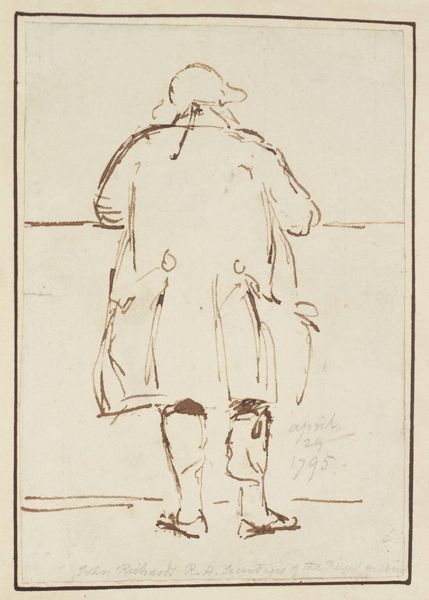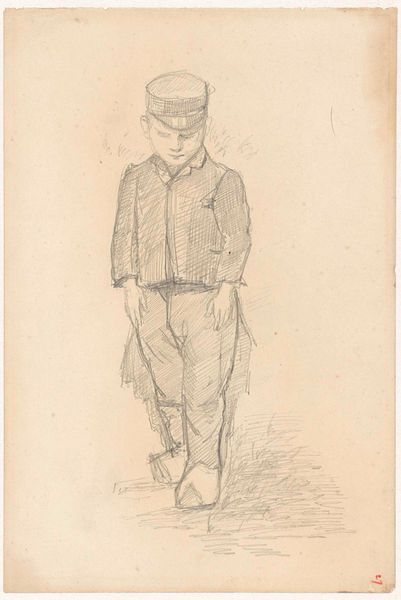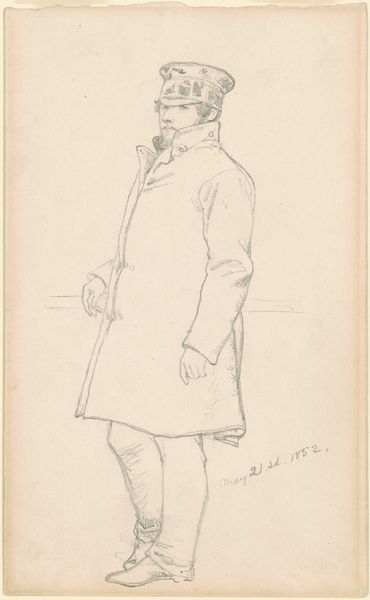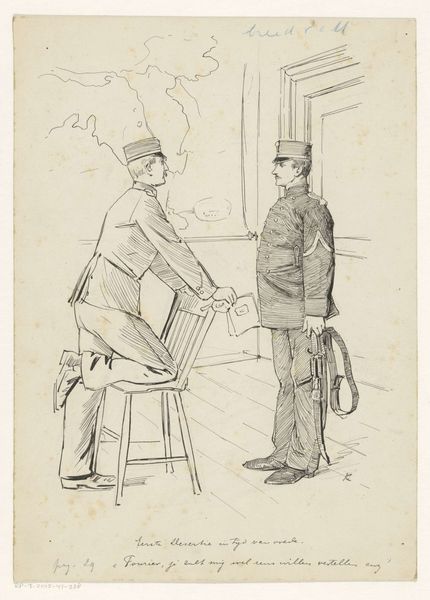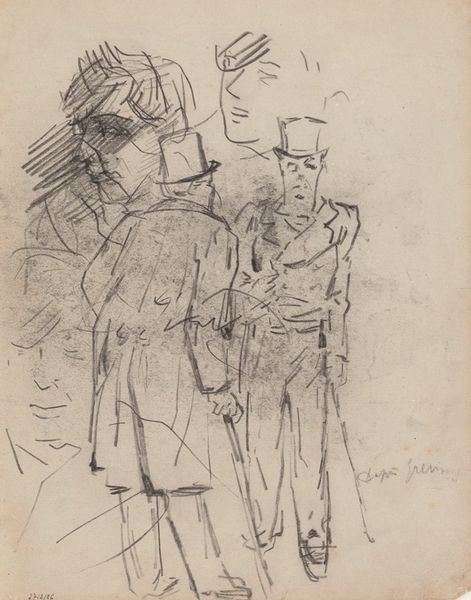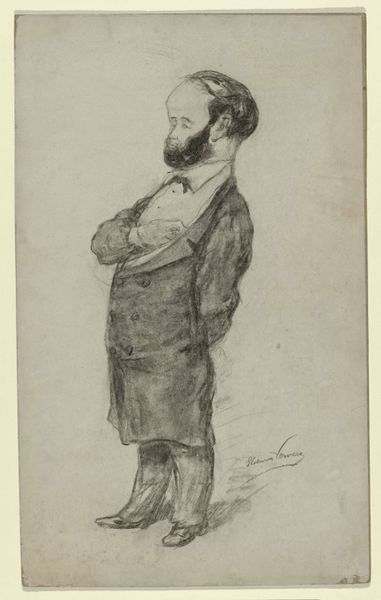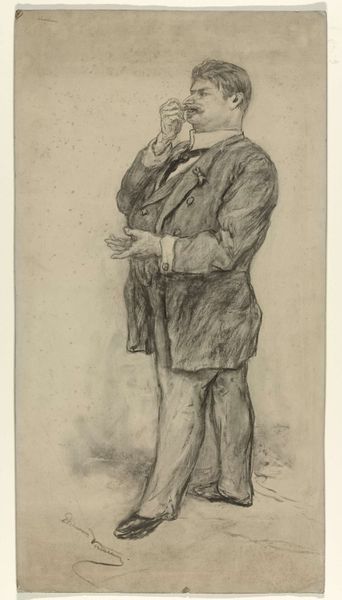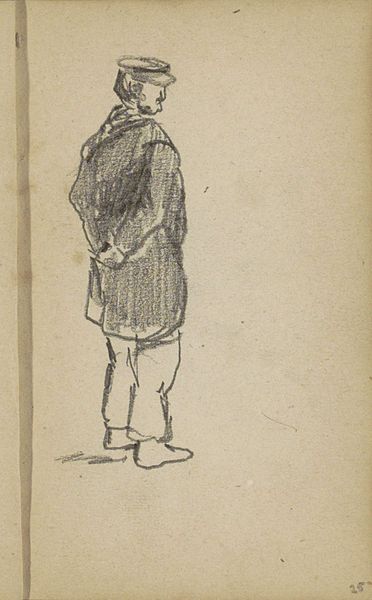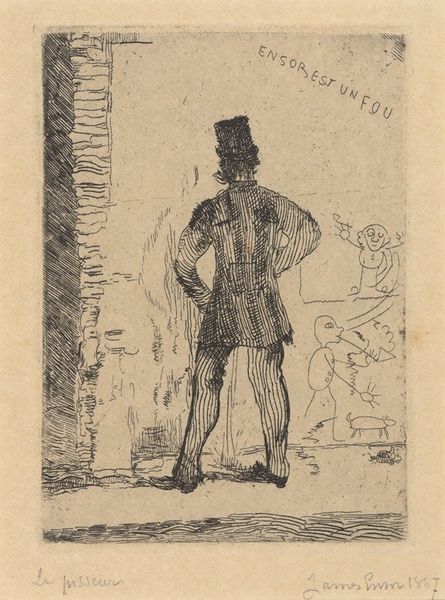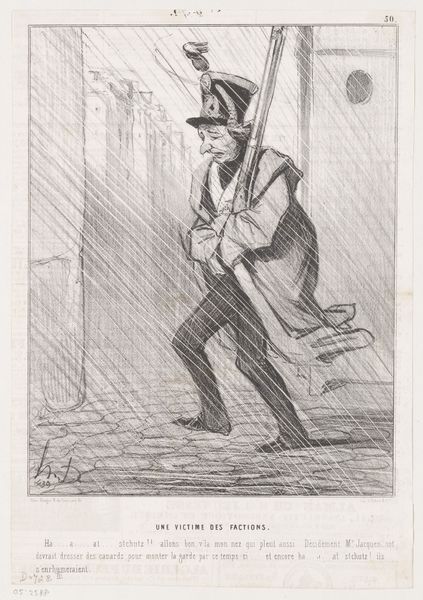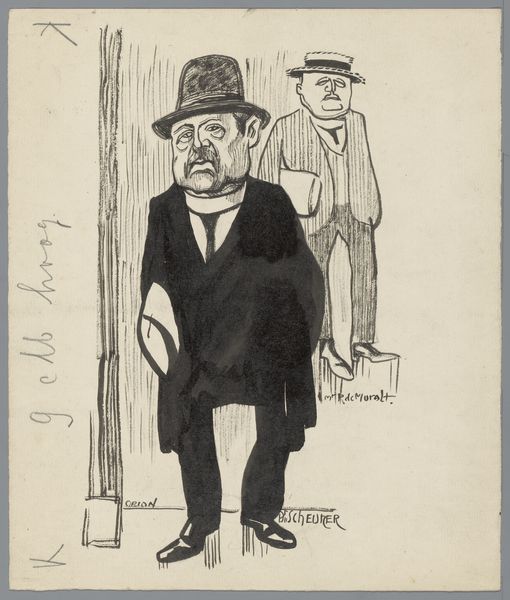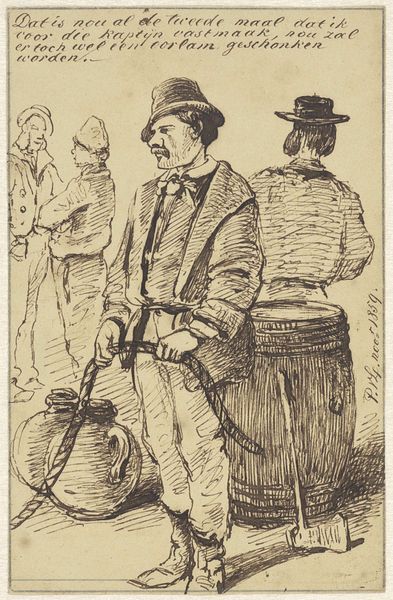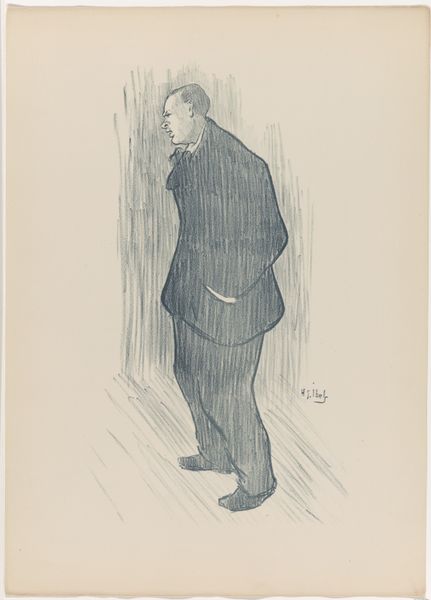
drawing, pencil
#
portrait
#
drawing
#
flâneur
#
pencil
#
symbolism
#
post-impressionism
Dimensions: height 305 mm, width 220 mm
Copyright: Rijks Museum: Open Domain
Editor: So this is "Portret van dichter Paul Verlaine in Londen" – Portrait of the poet Paul Verlaine in London – created around 1894 to 1898 by Frédéric-Auguste Cazals, rendered in pencil. The depiction seems straightforward, but it's got a somber quality, almost bleak, with the policeman in the background. How do you see this drawing? Curator: I’m immediately struck by the materiality. Look at the granular quality of the pencil work, and consider Cazals’s access to different grades and types of pencils at the time. What was the economic reality of acquiring art supplies then? How did that impact the accessibility of portraiture, both for the artist and the subject? Editor: That's fascinating; I was only considering the emotional impact. Curator: Consider too the context of its production. Cazals lived and worked in Montmartre, surrounded by a vibrant community of artists. How did his interactions within this social and professional network affect his artistic choices, the style of his drawings, the materials used? Were there specific brands of pencils favored among his peers? The paper he selected. It all matters! Editor: So you're saying it’s not just about Verlaine as an individual, but about the whole artistic ecosystem around Cazals? The commercial trade and labor involved with that kind of work? Curator: Precisely! Even the very act of Verlaine being in London, and the class disparity we see between the figures, become subject to the material circumstances enabling the portrait. How do we contextualize Verlaine’s “flâneur” persona knowing this drawing’s existence is partly a function of consumption and trade? Editor: It adds a whole new dimension to the work, looking beyond Verlaine himself, to all those things that produced it and made it circulate at the time. Curator: Exactly, and remembering that those material conditions extend to us, viewing it today!
Comments
No comments
Be the first to comment and join the conversation on the ultimate creative platform.
